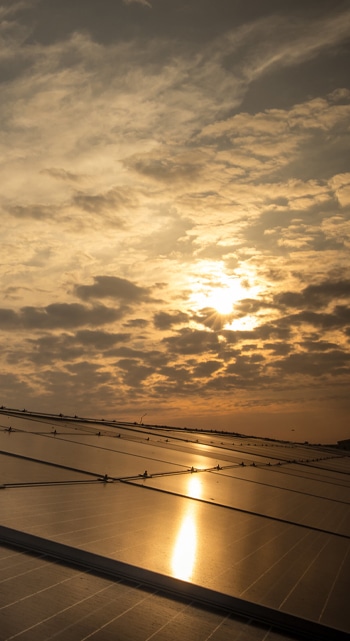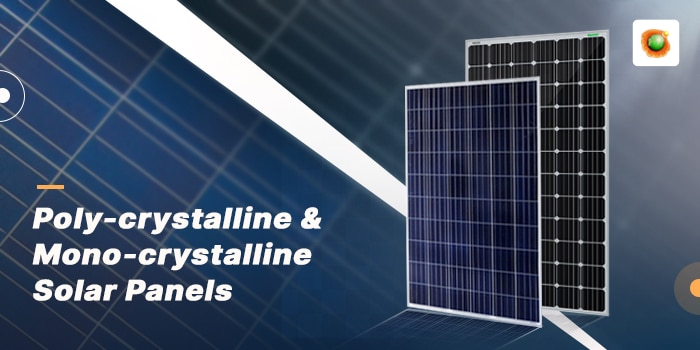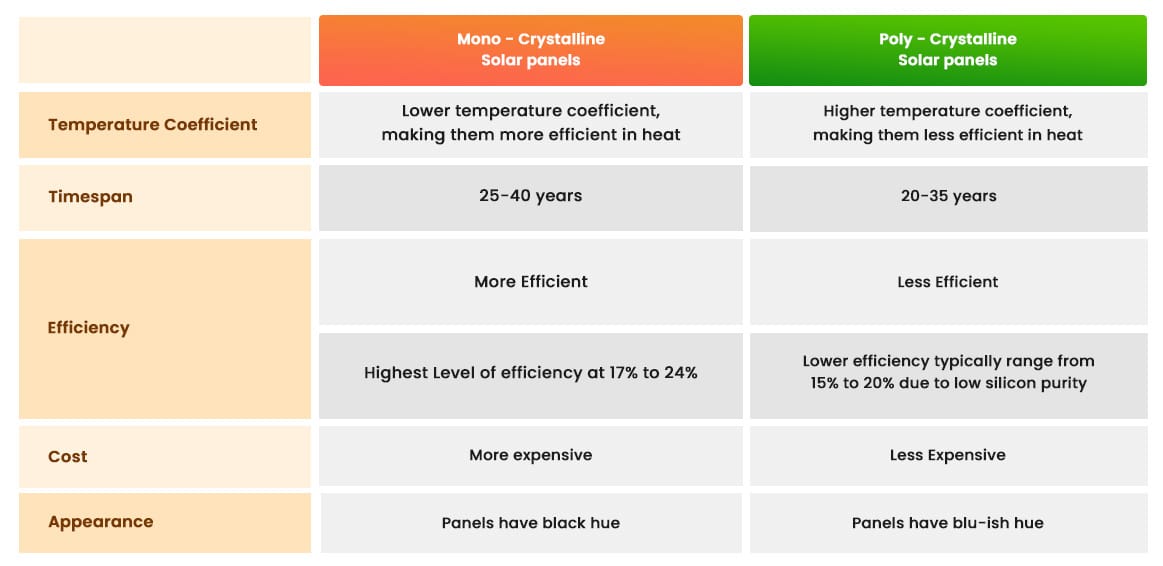Solar panel technology has advanced significantly over the years, and a variety of new solar panels are now available on the market.
However, there are two major types of solar panels to consider when evaluating your PV system’s solar panel options.
- Mono-crystalline solar panels
- Poly-crystalline solar panels
Both types of panels use the sun’s energy, but you should weigh the pros and downsides of monocrystalline vs polycrystalline solar panels before making a purchase.
Comparison between Mono-crystalline and Poly-crystalline Solar Panels
Monocrystalline Solar Panels
Monocrystalline solar panels are both the most popular and the most efficient type of solar panel on the market. They create more kilowatt-hours of electricity than polycrystalline panels because they have a greater conversion efficiency.
Silicon is produced into bars and then sliced into wafers to make monocrystalline cells for solar panels. These panels are referred to as “monocrystalline” because the silicon employed is single-crystal silicon. The electrons that generate an electric current have greater room to move in a monocrystalline panel since it is made up of a single crystal. As a result, monocrystalline solar panels outperform polycrystalline solar panels in terms of efficiency.
Advantages of monocrystalline solar panels
- Require less space compared to other types due to their high efficiency.
- Optimized for commercial use and offers a longer lifespan.
- Perform better in low levels of sunlight, making them ideal for cloudy areas.
- Can be easily installed, and Its maintenance effort is low.
Disadvantages of monocrystalline solar panels
- An increase in temperature has a negative impact on performance levels.
- These solar panels are of higher price.
Polycrystalline solar panels
Although polycrystalline solar panels have lower efficiency than monocrystalline panel alternatives, they offer the advantage of being less expensive. Polycrystalline solar panels are also known as “multi crystalline” or “many-crystal silicon” panels.
Instead of employing a single crystal of silicon, producers combine several shards of silicon to form the panel’s wafers. As each panel contains several crystals, electrons have less freedom to migrate. As a result, polycrystalline solar panels perform low than monocrystalline solar panels in terms of efficiency.
Advantages of polycrystalline solar panel –
- The prices are significantly more reasonable.
- The majority of the residential market opts for this option.
Disadvantages of polycrystalline solar panel –
- Lower temperature coefficient
- Lifespan gets affected by heat.
- In low-light conditions, it’s less effective.
What to choose?
Monocrystalline or Polycrystalline Solar Panels?
- Solar Financing
Monocrystalline solar panels are more expensive than polycrystalline solar panels. Paying more for high-efficiency monocrystalline panels can result in larger returns on your solar investment. To choose the best decision for you, you need to carefully weigh the costs and benefits.
- Space Constraints
If you have limited space, higher-efficiency solar panels may be preferable. As a corollary, in these circumstances, paying the extra cost for more efficient monocrystalline panels can help you maximize your electricity production. Polycrystalline panels exhibit efficiencies of 13-16%. Monocrystalline panels have efficiencies of 15-20%. Because they provide less electricity per square foot, they are less space-efficient.
- Temperature Coefficient
A monocrystalline solar panel has a higher heat tolerance than a polycrystalline panel. monocrystalline solar panels have greater temperature coefficients than polycrystalline solar panels, which implies that when they heat up, they lose more production.
If you live in a hotter climate, you should carefully evaluate the temperature coefficient of the solar panels you choose, especially since monocrystalline panels would be preferable there.
- Lifespan
The longevity of monocrystalline and polycrystalline solar panels should be considered when comparing initial installation costs. Due to the increased lifetime of monocrystalline solar panels, manufacturers frequently give a 25-year guarantee. Polycrystalline solar panels have a similar lifetime, however, the manufacturer’s warranty duration may vary.






